Leonardo da Vinci portrait marks 500th anniversary of his death
- Published
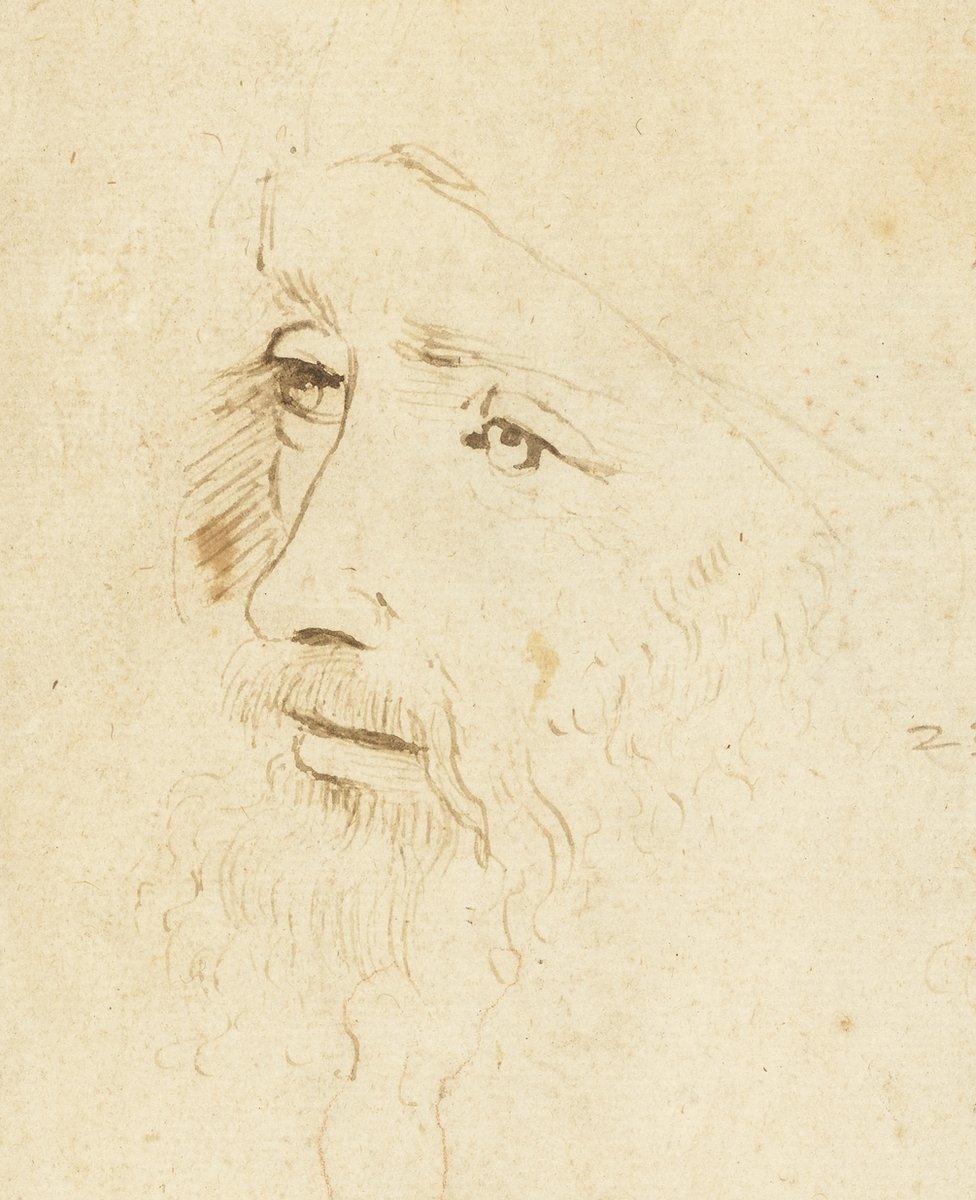
This portrait, newly identified as Leonardo da Vinci, is going on display in London as the world marks the 500th anniversary of the death of the artist and inventor.
Only one other portrait has survived from the artist's lifetime, aside from self-portraits.
Martin Clayton was researching an exhibition for The Queen's Gallery in London when he identified the sketch as a study of Leonardo made by an unidentified assistant shortly before the master's death in 1519.
The only other contemporary image is by his pupil, Francesco Melzi, created around the same time, seen below.
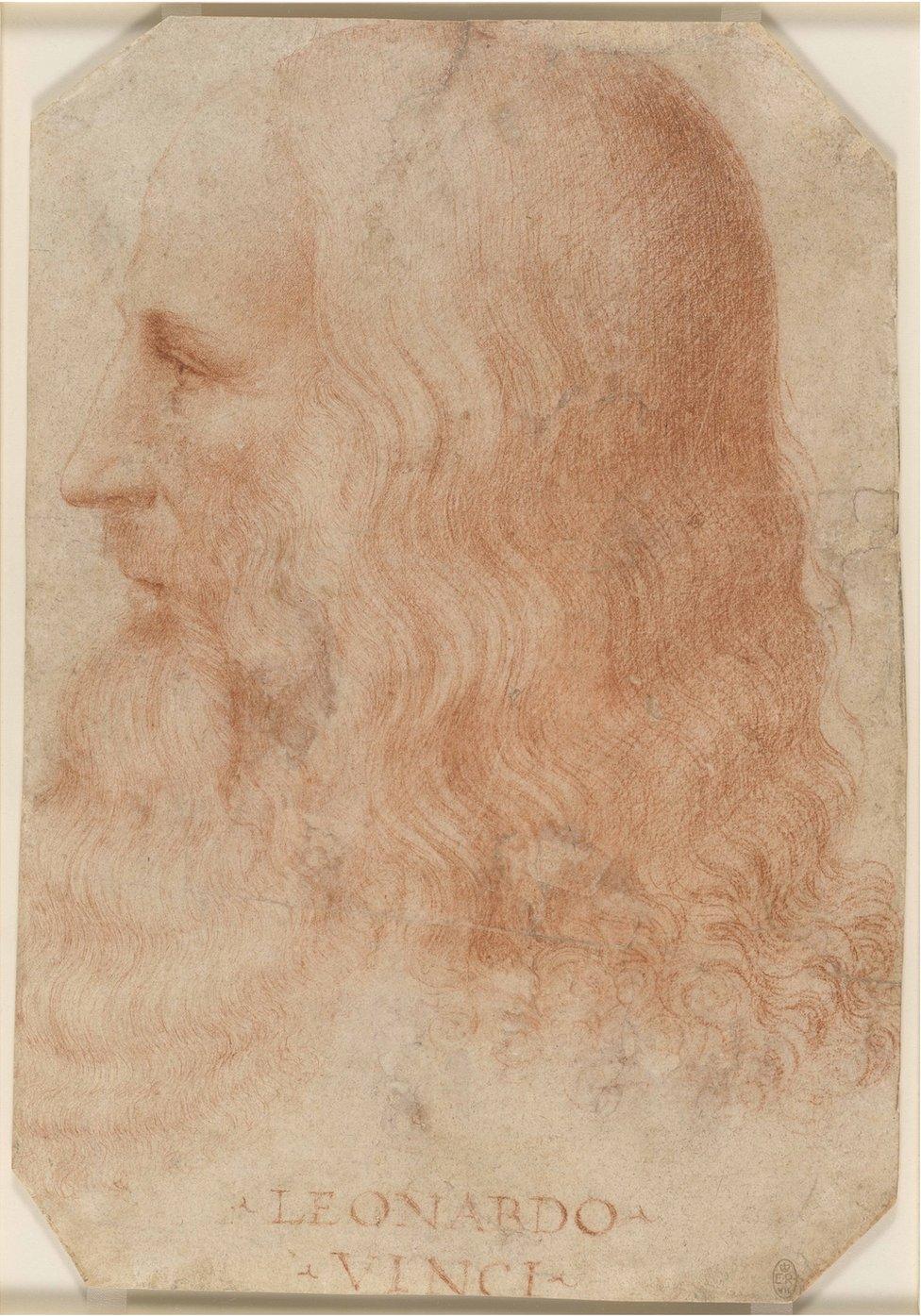

"In the sketch, he is aged about 65 and appears a little melancholy and world-weary. If you compare this sketch with Francesco Melzi's portrait of Leonardo, you can see strong indications that this too is a depiction of the artist," says Mr Clayton of the Royal Collection Trust.
"The elegant straight nose, the line of the beard rising diagonally up the cheek to the ear, a ringlet falling from the moustache at the corner of the mouth, and the long wavy hair are all exactly as Melzi showed them in his portrait.
"Leonardo was renowned for his well-kept and luxuriant beard, at a time when relatively few men were bearded - though the beard was rapidly coming into fashion at this time."
Museums and galleries are marking the Leonardo da Vinci anniversary. Here is a selection of his work, which will go on display in Italy, France and the UK.

At the master's birthplace, Museo Leonardiano, Vinci, Italy
In the village of Vinci, the Museo Leonardiano is exhibiting the artist's first known drawing, dated 5 August 1473, seen below.
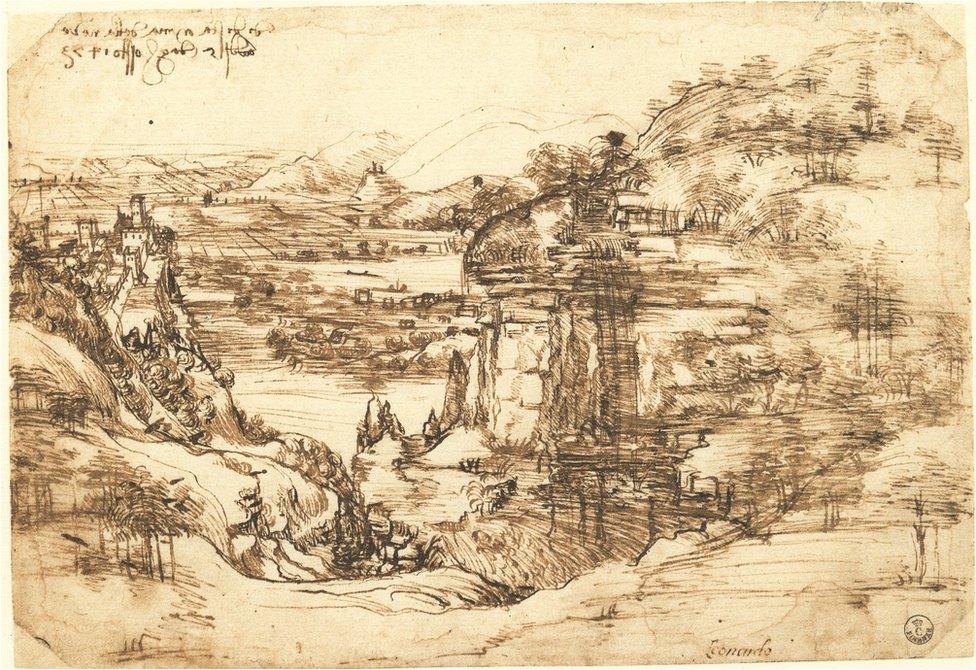
Entitled Landscape 8P, it was sketched when the artist was 21. The museum describes the image as "a kind of palimpsest for all of Leonardo's future output".
The drawing includes a written reference to the Catholic festivity of Santa Maria della Neve (Our Lady of the Snow).
The museum say details in the sketch suggest the setting may be a combination of different places, including the Montalbano mountain ridge and the Valdinievole region in Tuscany.
A high-resolution three-dimensional digital version of the drawing will also be available at the exhibition, allowing visitors to see details not visible to the naked eye.
The sketch will be on display until 26 May and will then return to the Uffizi gallery in Florence.

Leonardo da Vinci's Last Supper, Loire Valley, France
A tapestry based on Leonardo's mural painting The Last Supper will be displayed at the Château du Clos Lucé in France, where he spent the final years of his life, between 1516 and 1519.
It is the first time the tapestry has been been outside the Vatican museum since the 16th Century.
The silk tapestry was woven for Louise of Savoy and her son, the future king of France, Francis I, some time before 1514. The new king invited Leonardo to move to France and much of the artist's work went with him.

The original mural, seen above, is one of only around 20 paintings Leonardo completed and was commissioned for the refectory of the Convent of Santa Maria delle Grazie in Milan.

Leonardo da Vinci exhibition, Louvre museum, Paris, France

The Louvre in Paris expects huge demand for its forthcoming Leonardo da Vinci exhibition this October, urging visitors to book a time slot ahead of their visit.
The museum holds the largest collection of his paintings, the best known of them being the Mona Lisa, seen above.
The gallery says the new exhibition will be the culmination of more than 10 years of work, including scientific examinations of the paintings.

Leonardo da Vinci: A Life in Drawing, The Queen's Gallery, Buckingham Palace, London
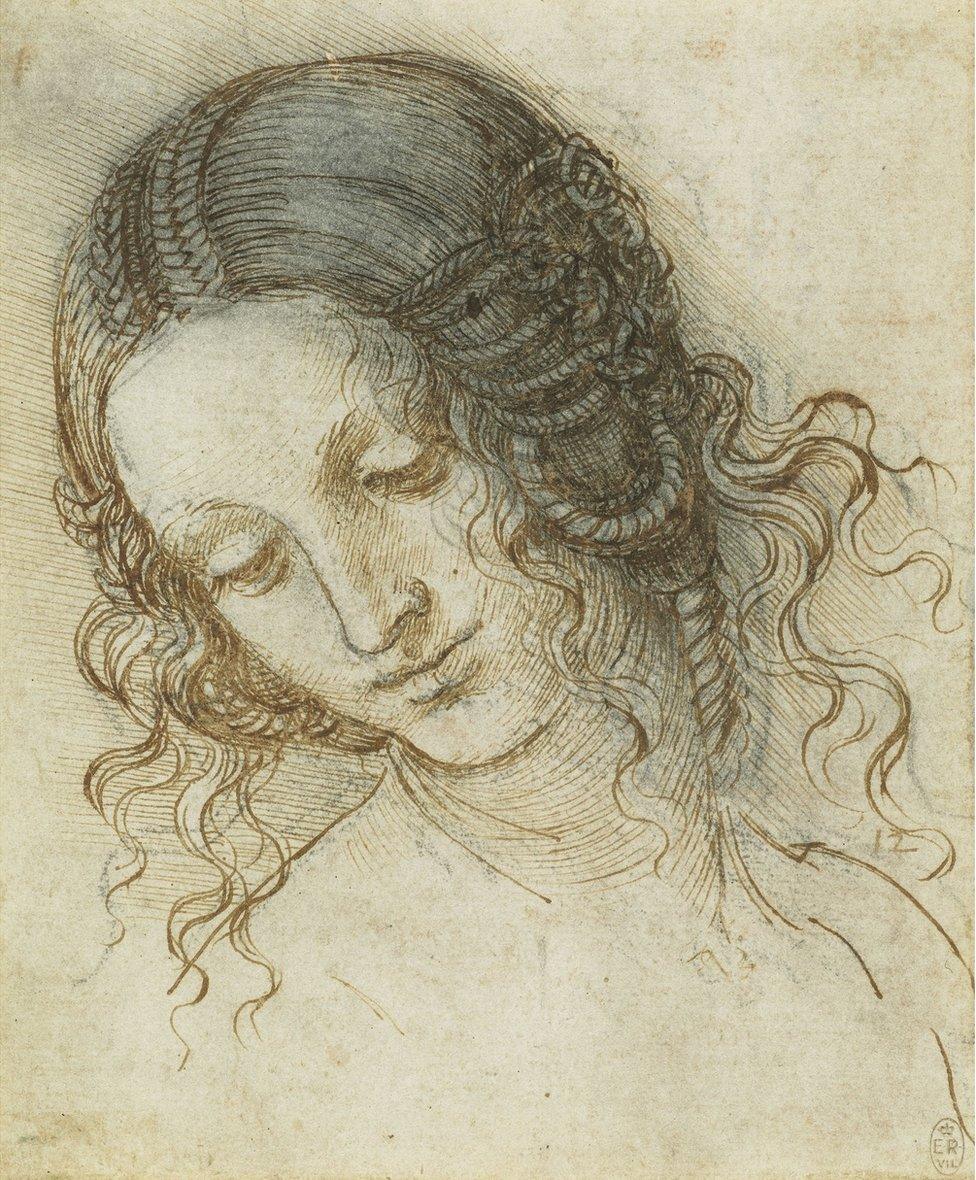

Until 6 May, 144 of Leonardo's drawings are on display in 12 simultaneous exhibitions across the UK in venues including Belfast, Cardiff and Glasgow.
The exhibitions are collectively called Leonardo da Vinci: A Life in Drawing.
From 24 May to 13 October, a single exhibition will open in The Queen's Gallery in Buckingham Palace, featuring 200 drawings, before moving to The Queen's Gallery in Edinburgh.
The drawings on display include The head of Leda in lack chalk, pen and ink (above) and A man tricked by Gypsies (from 1493, below).
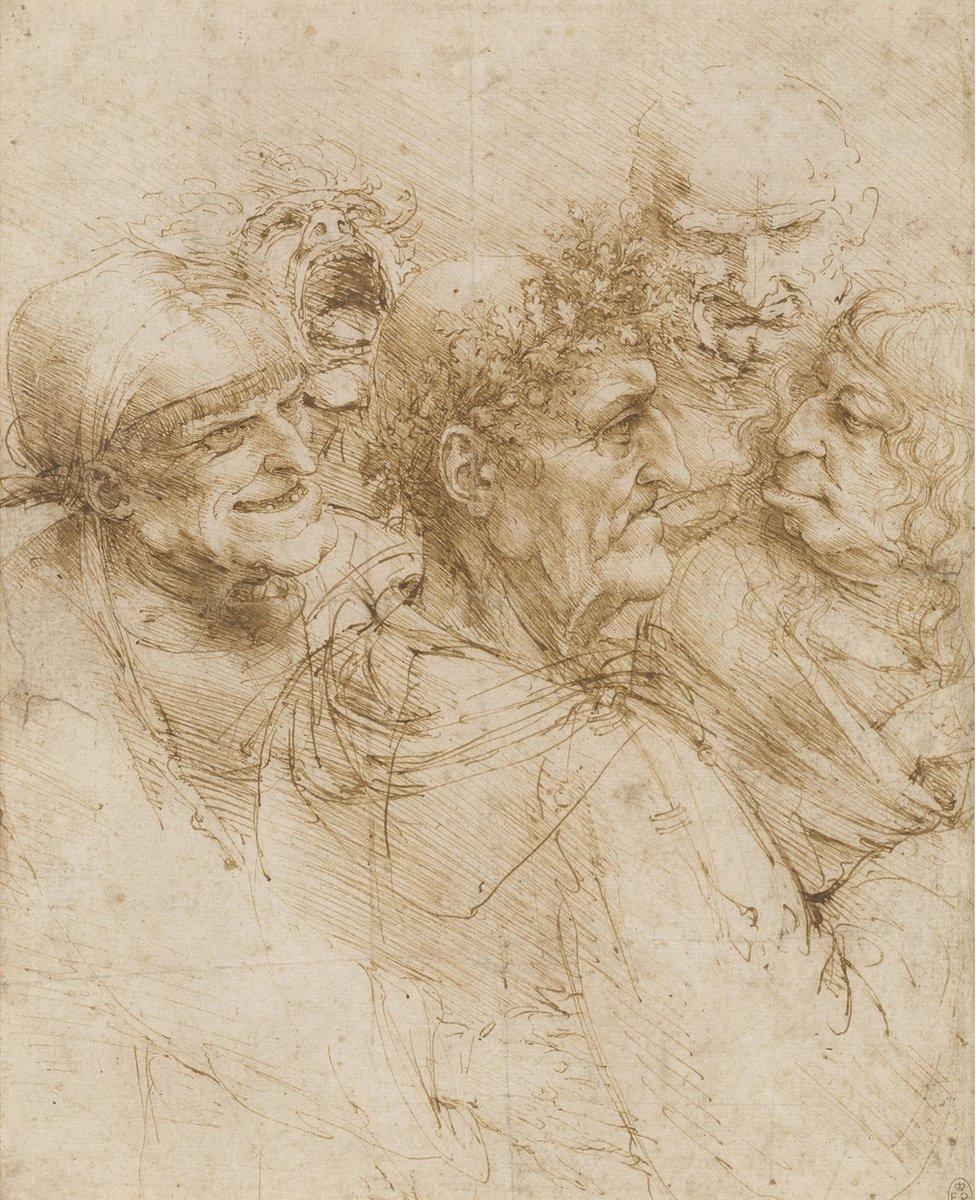

Da Vinci has been regarded primarily as an artist, but the thousands of pages that survived from his notebooks show his diverse interests and achievements, including work on geology, anatomy, flight, gravity and optics.
He is often credited with coming up with concepts for the bicycle, aeroplane, helicopter, and parachute some 500 years ahead of their time.

A study of a woman's hands

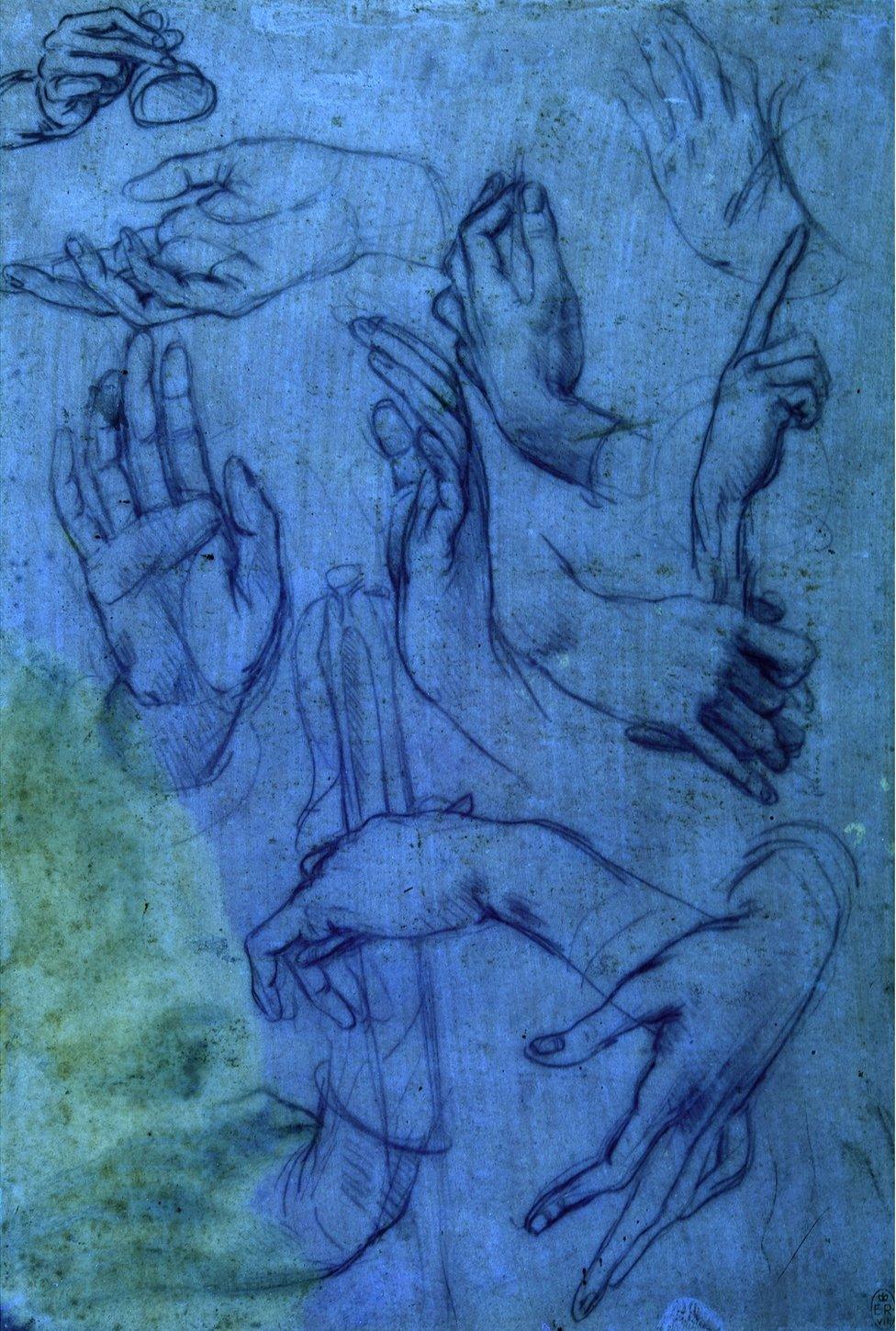
Studies of hands for the Adoration of the Magi painting in 1481, seen under ultraviolet light
Da Vinci produced ground-breaking work as an anatomist by dissecting 30 human corpses, which he studied in order to paint the human form more accurately.
The notes that accompany much of his work were written left-handed in mirror scripts.
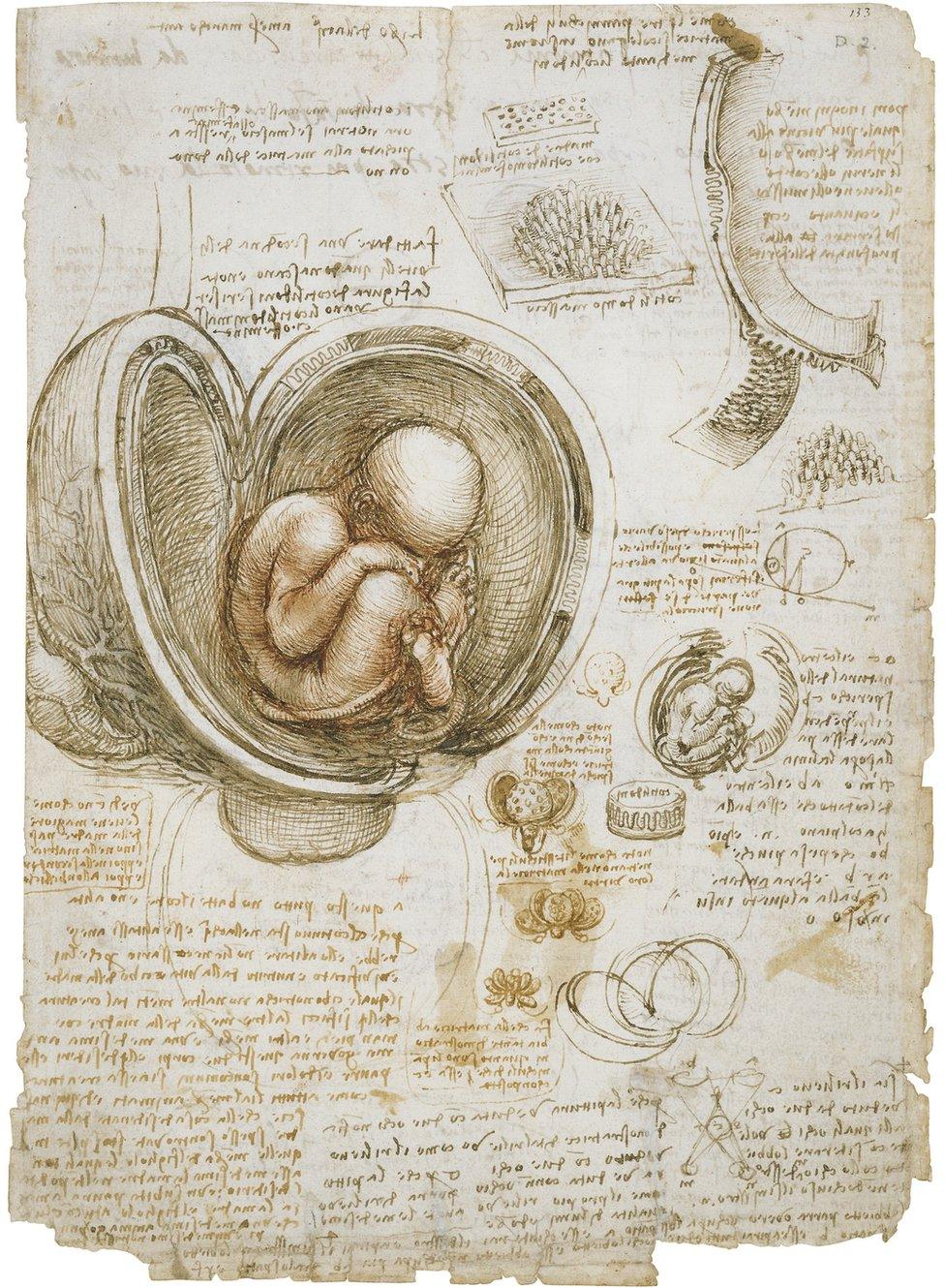
The foetus in the womb, from 1511

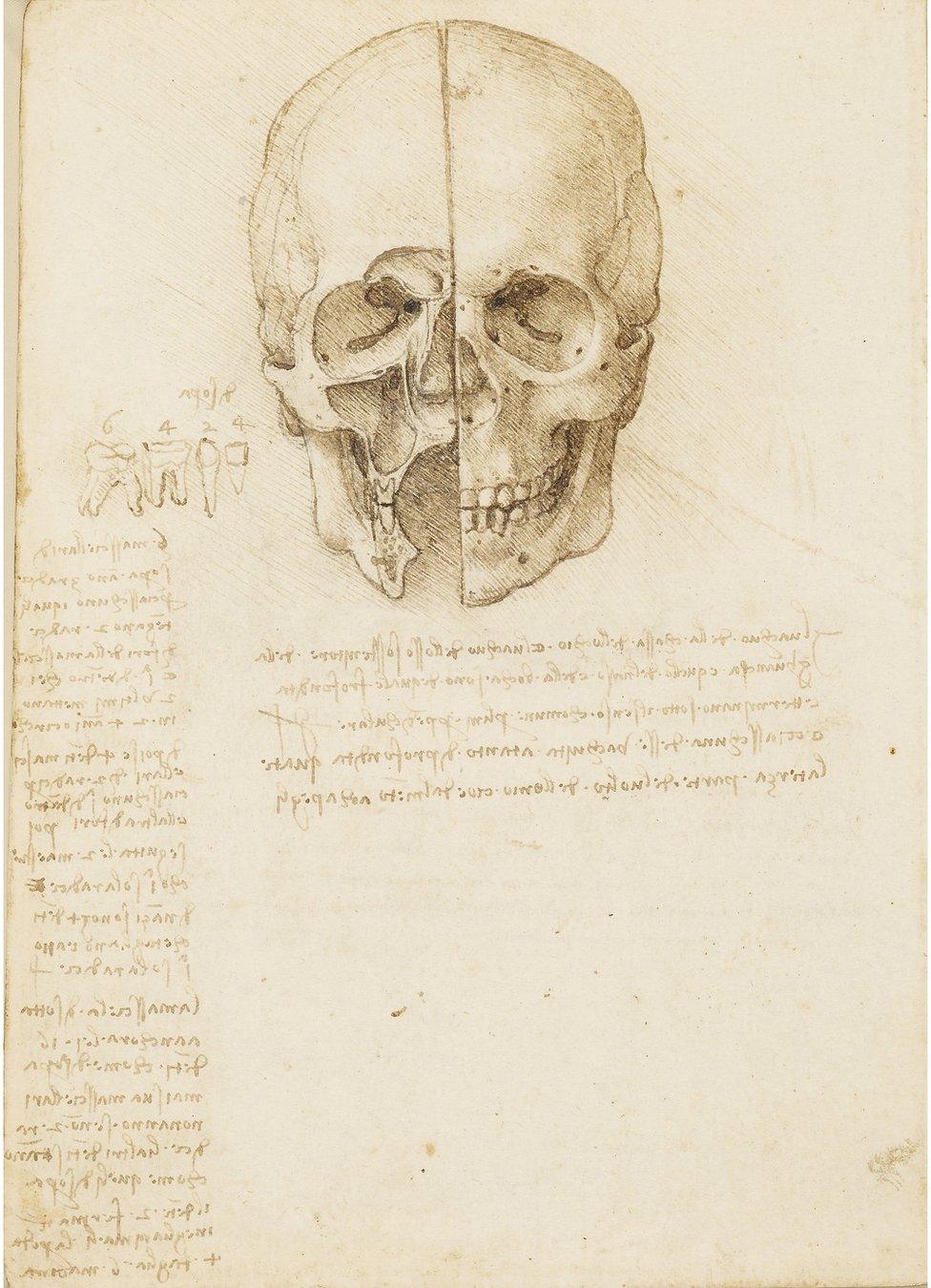
The skull sectioned, from 1489

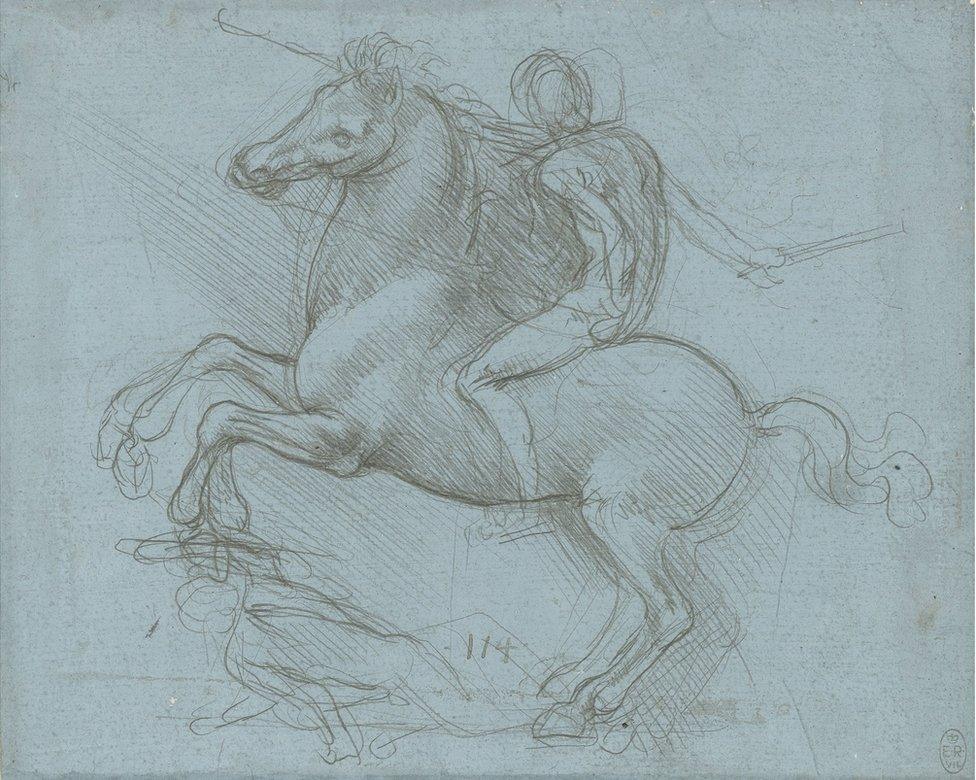
A design for an equestrian monument, made around 1485

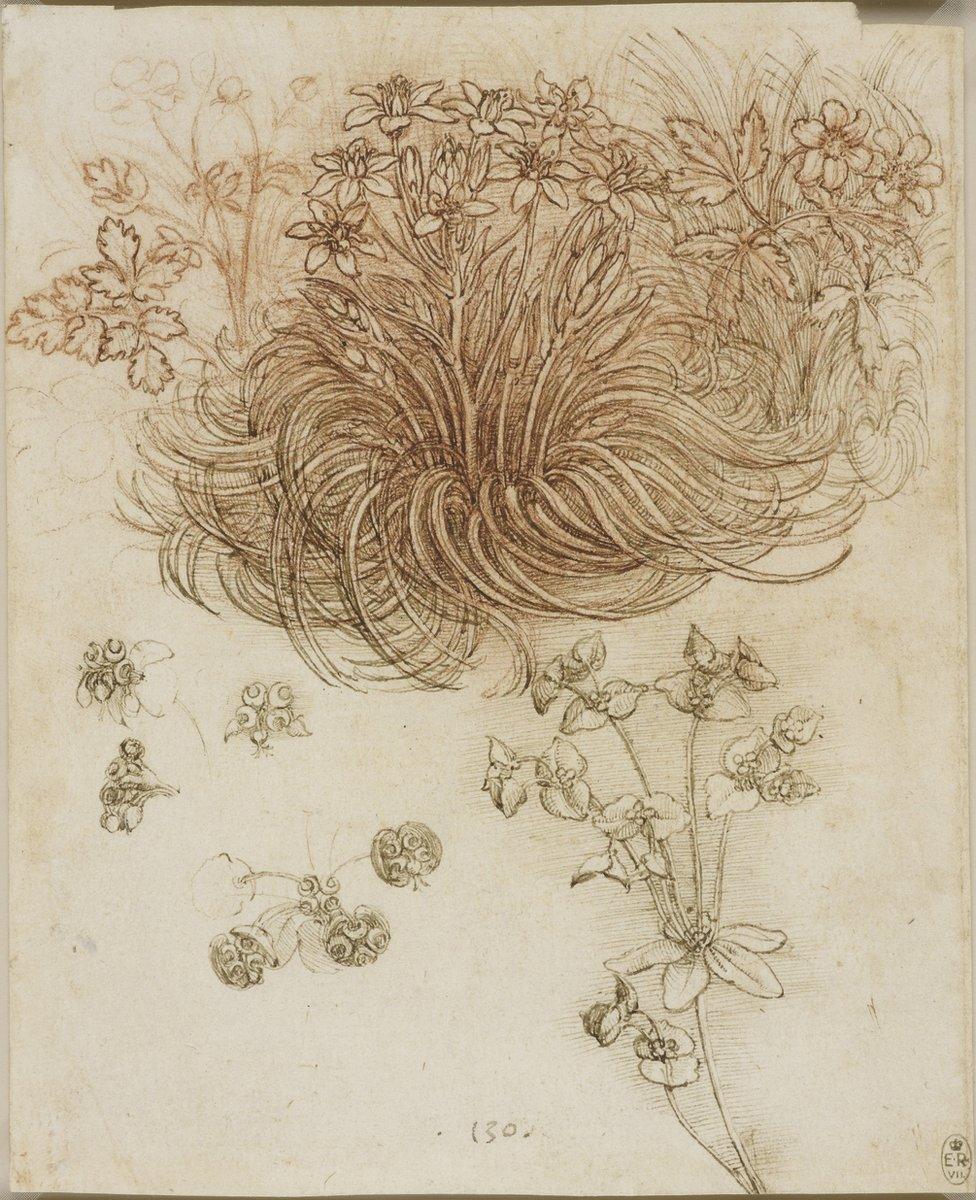
A star-of-Bethlehem and other plants

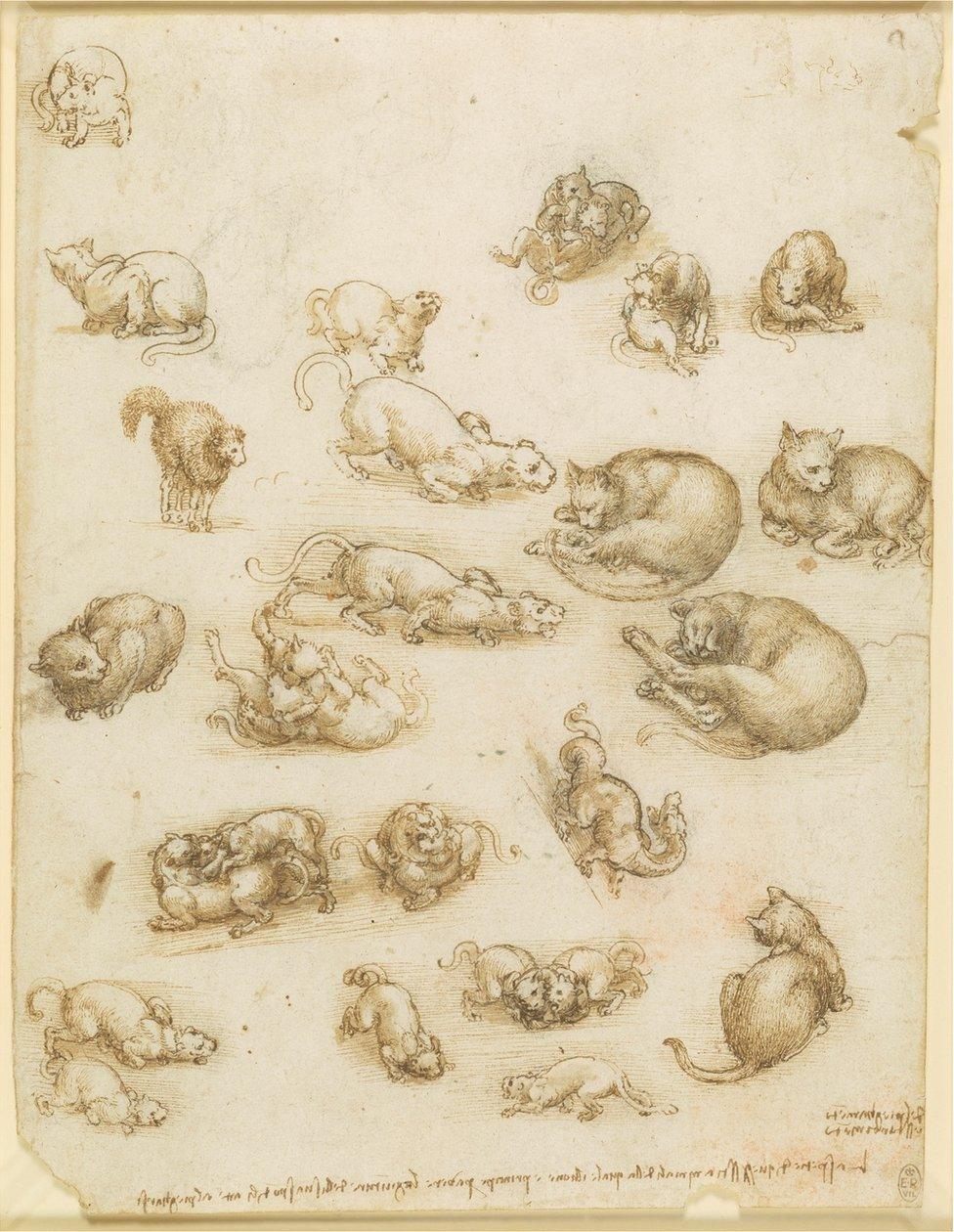
A drawing of cats, lions and a dragon


The head of Judas
- Published15 April 2016
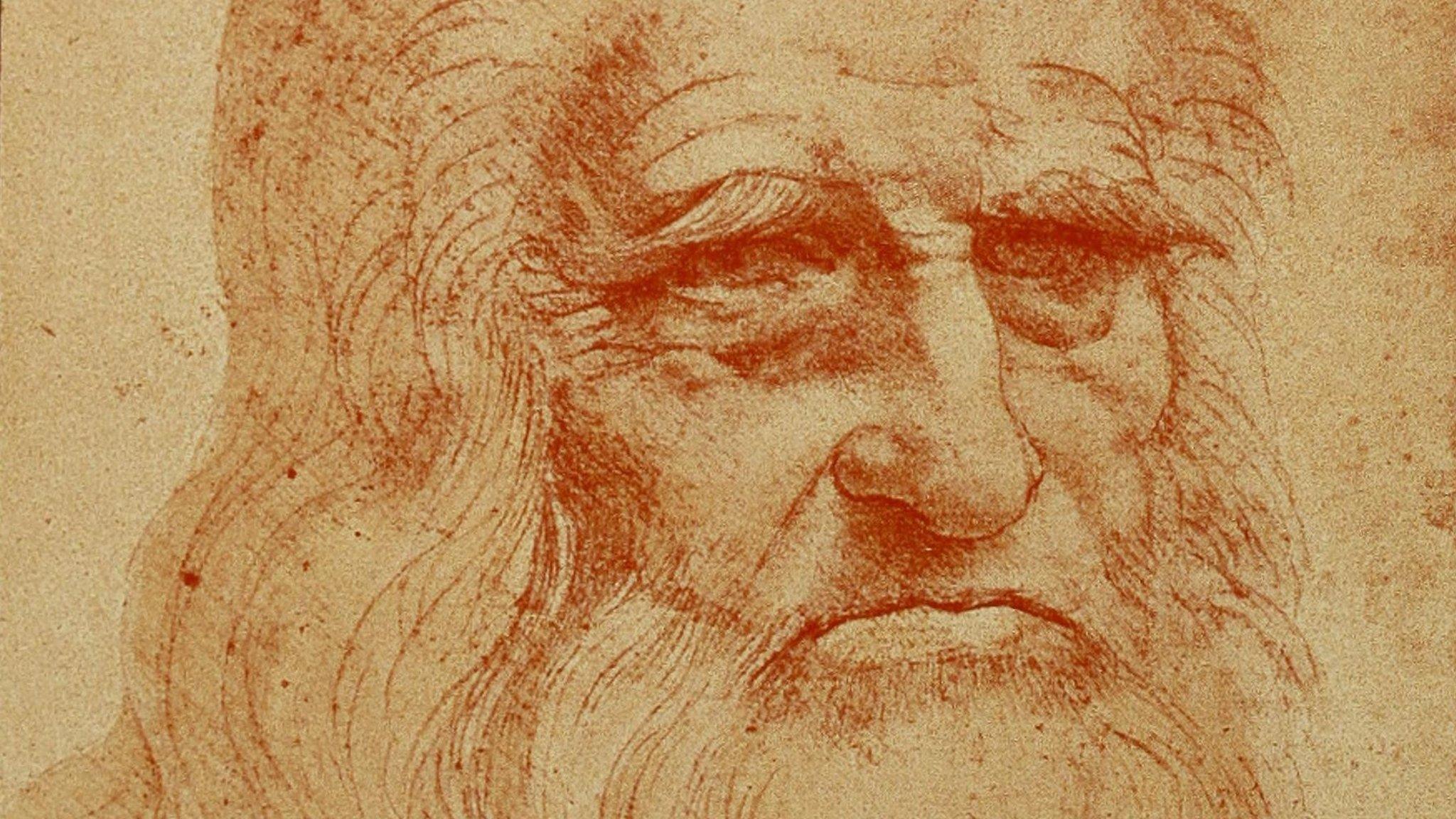
- Published10 July 2015

- Published8 November 2011